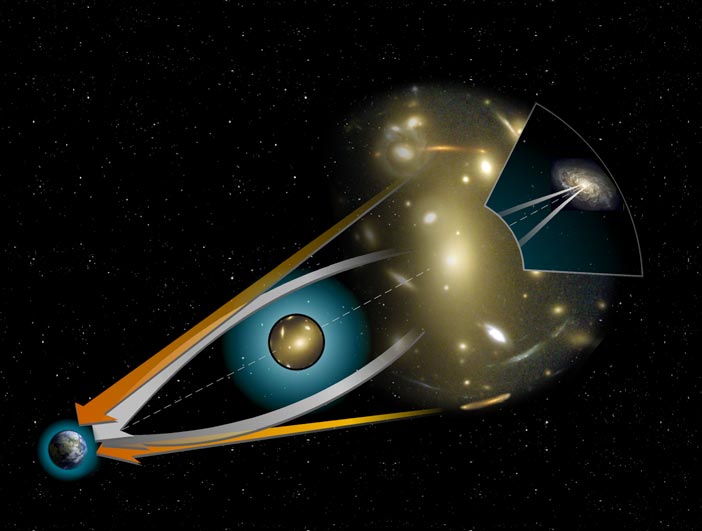 |
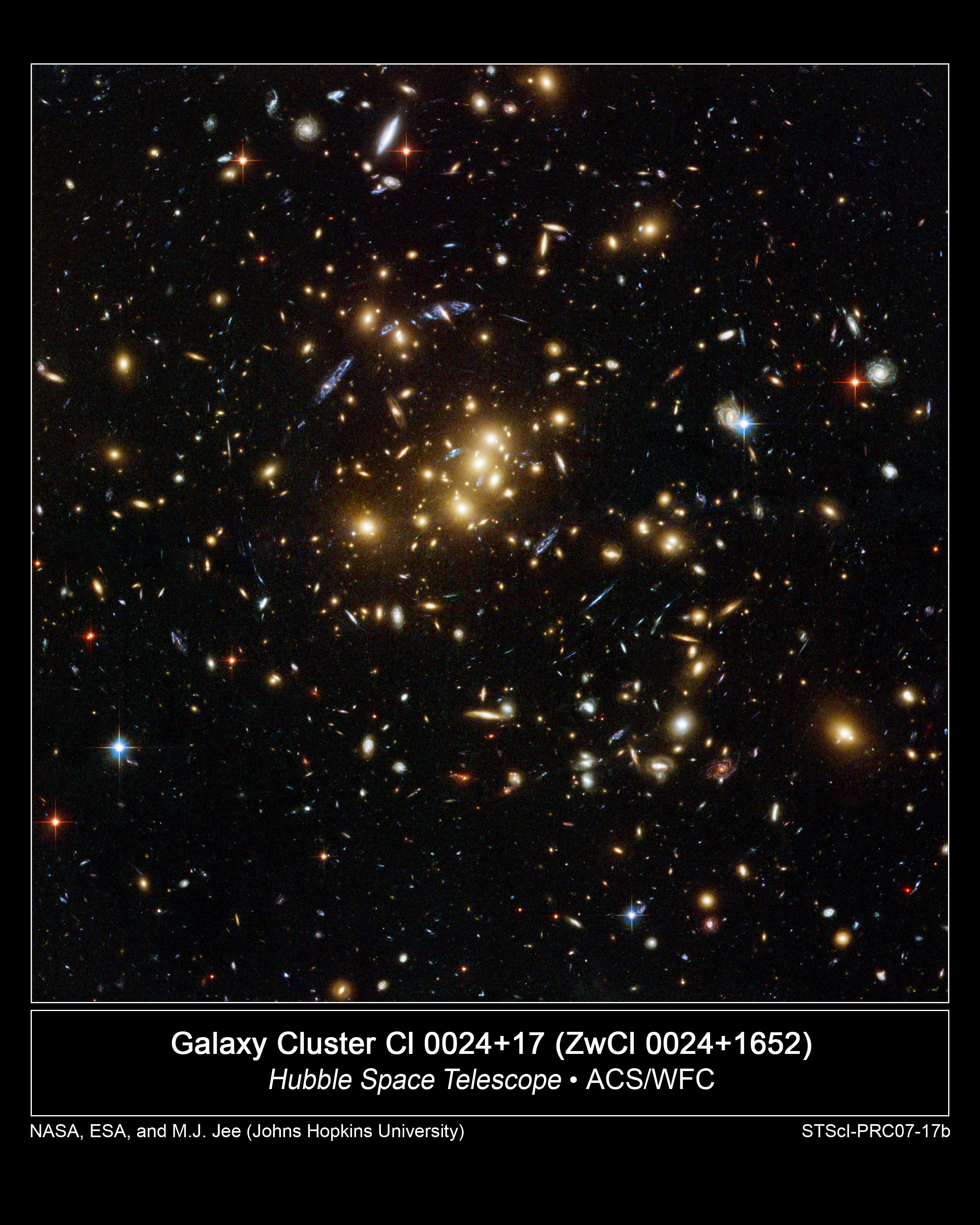 |
An interesting experiment to study the possible types of compact objects in the halo of the Milky Way galaxy has been in progress for the last few years. In this work, one takes advantage of a prediction of the General Theory of Relativity (GTR) to probe the structure of the halo. GTR predicts that the path of a light ray will bend as it passes by a massive object,
 |
 |
that is, the intervening galaxy focuses the light from more distant objects acting like a lens, hence the name, gravitational lensing). We see the formation of rings (arcs), multiple images or amplification depending on how aligned are the Earth, the lensing mass, and the observed object, and on the uniformity of the mass distribution of the lensing object,
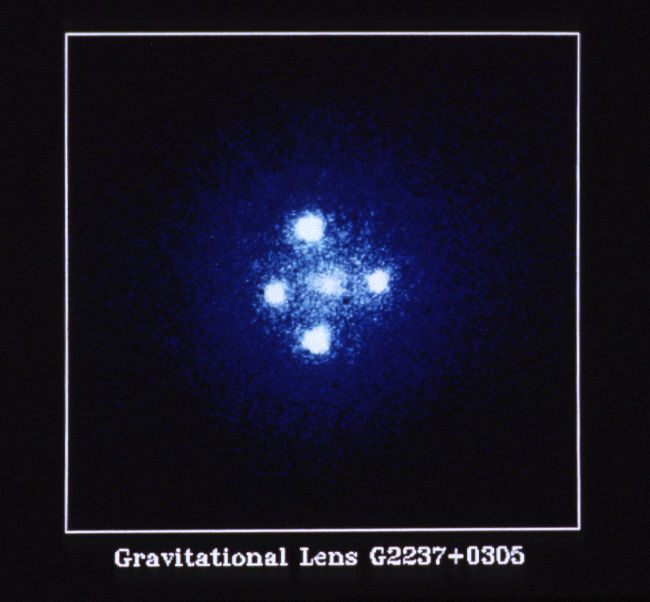 |
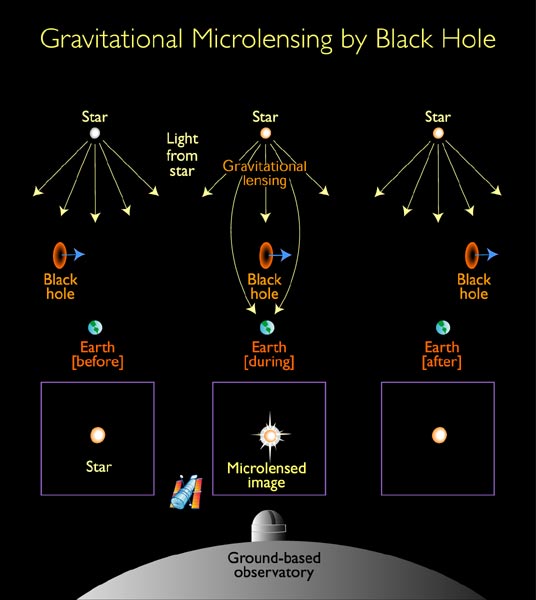
|
In the MACHO project, the idea is as follows. Astronomers point their telescopes in the direction of our nearest neighbor galaxy, the Large Magellanic Cloud (LMC), and the Bulge of our own Galaxy. The project team regularly take pictures of the LMC and the Bulge. The LMC and Bulge contains many billions of stars of which roughly twenty million are monitored by the MACHO team.
Since the objects in our halo orbit about the center of our Galaxy there is a chance that a halo object will pass in front of an LMC or Bulge star. If a halo object passes in front of an LMC or Bulge star, the light from the star will be amplified.
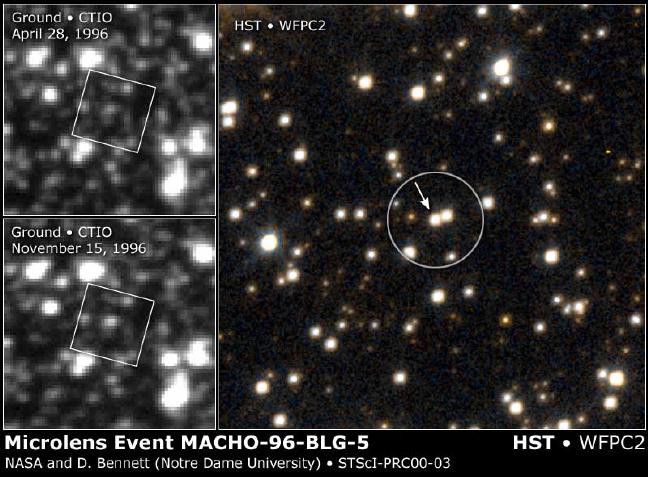
(For further results, see MACHO team summary.)
Based on the ongoing MACHO experiment, we infer that there is roughly 8x1010 M(Sun) of MACHO material in the halo rouhgly the same as the contribution as the luminous disk material. MACHOs may account for only `roughly 20 % of the halo mass. Each MACHO has a mass of roughly 0.1 to 1 M(Sun), that is, the observed MACHOs are of stellar-mass. The MACHOs may be of low mass but they are not planets, brown dwarfs, or comet-like objects; they are still too massive. MACHOs may make up a significant chunk of the halo mass, but still leave much material unaccounted for. Much of our halo may still be made up of more exotic types of matter.